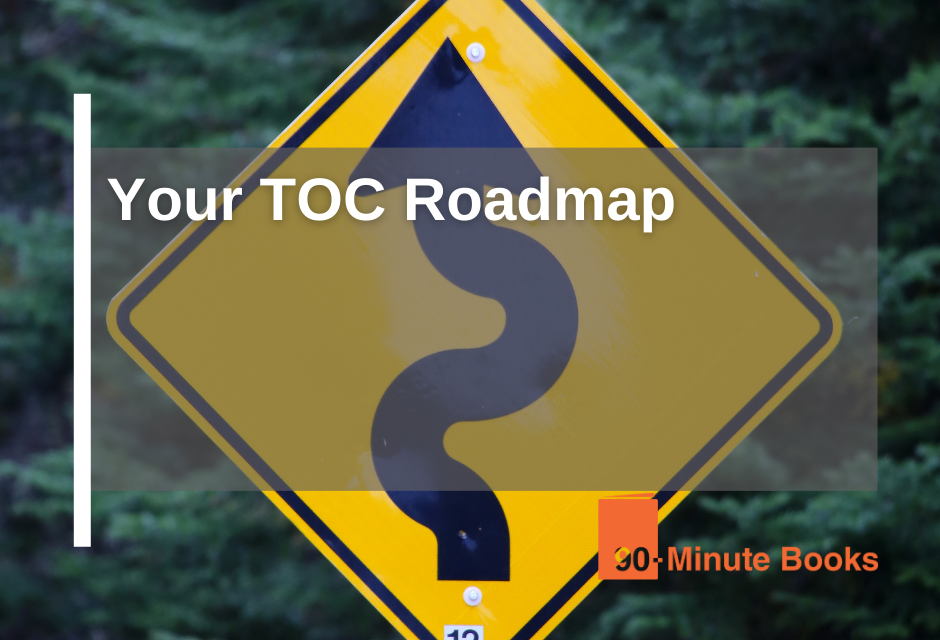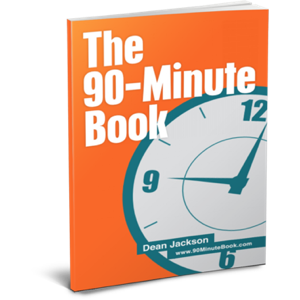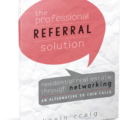We don’t speak about this much, but it doesn’t mean that it isn’t important, and that is your books content and its table of contents.
We know you know your stuff and have some great ideas to get started. We know you have an easy way for people to take the next step and begin to work with you. But we also know that, actually, read rates are pretty low.
Taking time to think about your Table of Contents as something that reinforces people’s belief they’re in the right place and that you’re the one to help them encourages you to look at this page as the stepping stone from the question in the title, to the answer in the next step.
Expectations And Assumptions
There’s the expectation that everyone has got their content dialed in, in the sense that they know what they’re talking about. We generally position the books and products as saying, “You already know what you want to talk about. You’ve got years worth of experience. The hardest part is just getting it down on paper, and that’s where we come in.“
With that assumption in mind, there’s the underlying expectation that people will take out the content themselves, in the sense that we don’t need to coach people on what they should be saying.
They know what they should be saying. The step that we take an active interest in is the purpose of the first 30-minute call. If you’re thinking about doing this yourself without our help, this is the work you need to do. It’s the homework stage before you record.
The aim of turning up on the recording is that all of the work’s been done so that you can just turn up with your A game and then run through an outline that’s already predefined, answering questions that you’re already comfortable with and, therefore, the content that gets captured is the best possible way to present your idea in a way that ends up on the pages and makes sense.
This homework stage is the key to getting nailed down before you start thinking about writing. Otherwise, you find yourself in all the problems we discuss, writing in circles or a never-ending sidetrack on a point you don’t necessarily need to make.
It’s not just writing words for the sake of writing; then, we’re suddenly at the end. it is an orchestrated journey.
Firstly,
You don’t want to write a book that effectively says, “Well, there are 10 things I could tell you, but you should come in and see me because it’s too complicated for you. I’m not going to tell you unless we have a consult.” That’s just offensive, or people would be disappointed with that.
Secondly,
You don’t want to find yourself answering the wrong question, which is what we just talked about. Make sure you follow the path that you think you’re following.
Thirdly,
You don’t want to find yourself in some rabbit warren of ancillary or supporting information that’s one tier from the core question. Honestly, no matter how simple the question seems, You could be answering how to boil an egg. If you got stuck in the weeds, I’m pretty sure you could get into the thermal dynamic components of different pan materials and how water boils at different altitudes.
As a person with all the knowledge on the topic, the more basic information really seems boring and something you want to get past quickly; you need to remember that many of your clientele might need these stepping stones. how does this relate to the table of contents? the table of contents is those stepping stones.
The table of contents also works as a check and balance to ensure your content flows in the right direction. if you’re not careful, you could find a call to action located smack dab in the middle of the book instead of at the end,
To Conclude,
As the title suggests, the Table of Contents is your roadmap to creating an effective lead generation tool. treat it with the respect it deserves, and it will see you to your destination.
For more on this roadmap, head to the podcast where Stuart and Betsey explain it.











